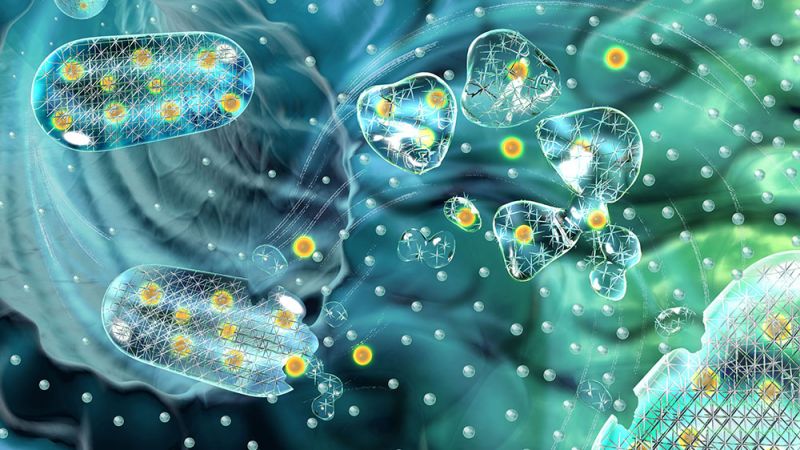
An emerging hydrogel material that has the capacity to degrade and spontaneously reform in the gastrointestinal tract could help researchers develop new and more effective methods for oral drug delivery.
“The majority of drugs and nutrients are absorbed into the body in the intestines, but to get there, they have to traverse the stomach, which is a very acidic, harsh environment that can interfere with the active molecules in pharmaceuticals,” says Kelly Schultz, an associate professor in the Department of Chemical and Biomolecular Engineering.
Schultz and fourth-year chemical engineering PhD student Nan Wu are studying covalent adaptable hydrogels (CAHs), which are being designed to release molecules as they lose polymer in the stomach but then re-gel on their own, which protects the molecules and allows them to stay active for targeted delivery in the intestines. The team’s microrheology research was recently published in Soft Matter.
To characterize the material and provide insight into its pharmaceutical potential, Wu has repurposed a microfluidic device originally developed in Schultz’s lab for research into fabric and home care products to create a “GI tract-on-a-chip.” The experimental setup allows her to exchange the fluid environment around the gel to mimic the pH environment of all the organs in the GI-tract, simulating how the material would react over time if ingested.
Using microrheology, Wu collects microscopy data and measures how much particles within the gel wiggle, with some experiments taking hours and others spanning days, depending on the digestive organ she is replicating. She tracks the particles using an algorithm that yields scientifically meaningful information on the properties of the material, which was originally developed by University of Colorado at Boulder chemical and biological engineering professor Kristi S. Anseth.
“Covalent adaptable hydrogels exhibit unusual spontaneous re-gelation that is really surprising,” Schultz says. “Typically, gels won’t degrade and then reform without any added stimuli as these do. We’ve demonstrated viability of CAHs as means of oral drug and nutrient delivery, and now we’re starting to work on molecular release studies and adding in other components to make the experiments more complex.”
Wu has been investigating these materials over the course of her entire PhD studies, says Schultz. “She’s doing amazing work and is committed to understanding every aspect of the research.”
Schultz’s lab focuses on the characterization of colloidal and polymeric gel scaffolds and the development of new techniques to characterize these complex systems, which play important roles in fields such as health care and consumer products.
“What we do in biomaterials is somewhat unique,” Schultz says. “There’s a lot of work on the cross-linking chemistry and actually developing these materials, and there’s a lot of animal research that implants and tests them, but there’s not that much work in the middle.
“A great deal of mystery lies between designing a material and understanding what’s going on when it’s working. We’re trying to find new ways that we can replicate what’s going on inside of an animal or a person and collect important measurements to connect the dots and inform further studies.”

